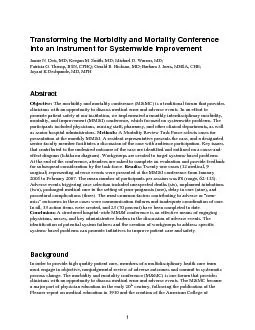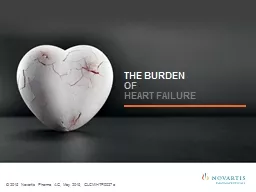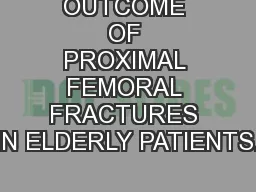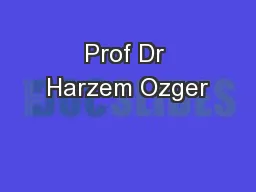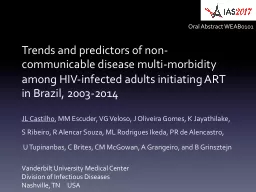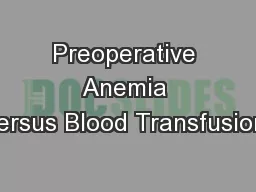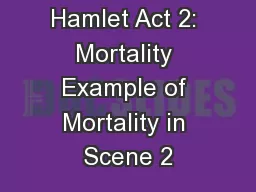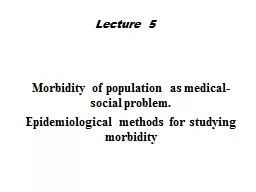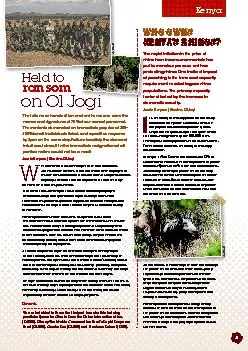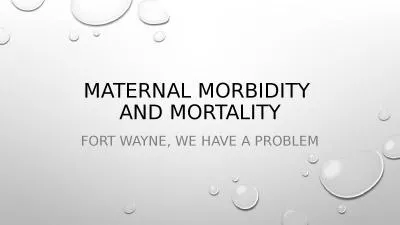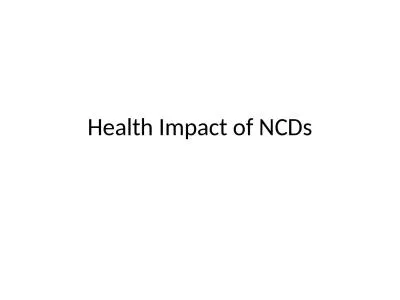PDF-Transforming the Morbidity and Mortality Conference Jamie N. Deis, MD
Author : tatyana-admore | Published Date : 2017-02-22
355 These early conferences were attended primarily by surgeons and anesthesiologists and were used to examine medical errors and adverse outcomes in an attempt
Presentation Embed Code
Download Presentation
Download Presentation The PPT/PDF document "Transforming the Morbidity and Mortality..." is the property of its rightful owner. Permission is granted to download and print the materials on this website for personal, non-commercial use only, and to display it on your personal computer provided you do not modify the materials and that you retain all copyright notices contained in the materials. By downloading content from our website, you accept the terms of this agreement.
Transforming the Morbidity and Mortality Conference Jamie N. Deis, MD: Transcript
Download Rules Of Document
"Transforming the Morbidity and Mortality Conference Jamie N. Deis, MD"The content belongs to its owner. You may download and print it for personal use, without modification, and keep all copyright notices. By downloading, you agree to these terms.
Related Documents

